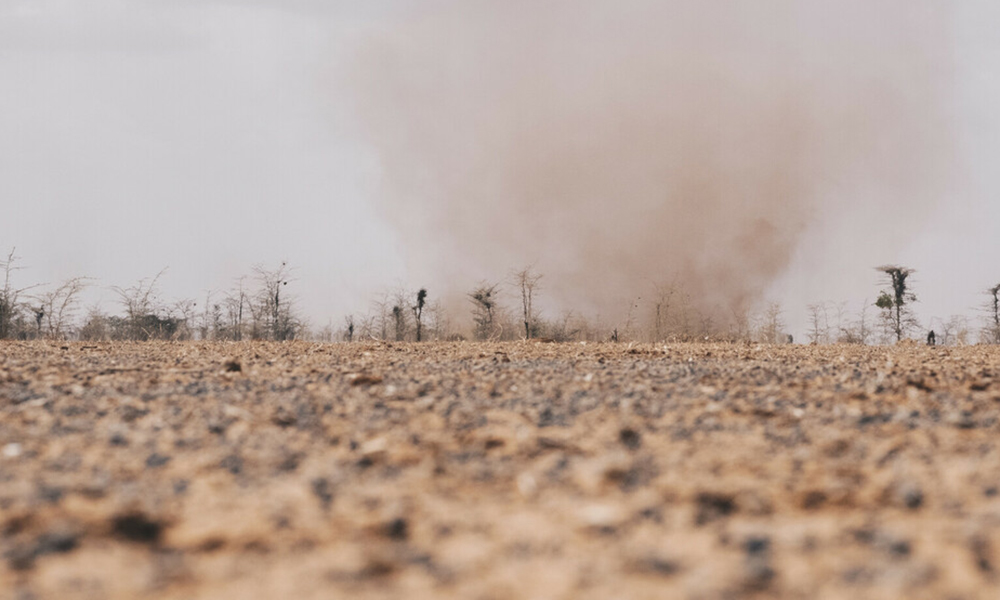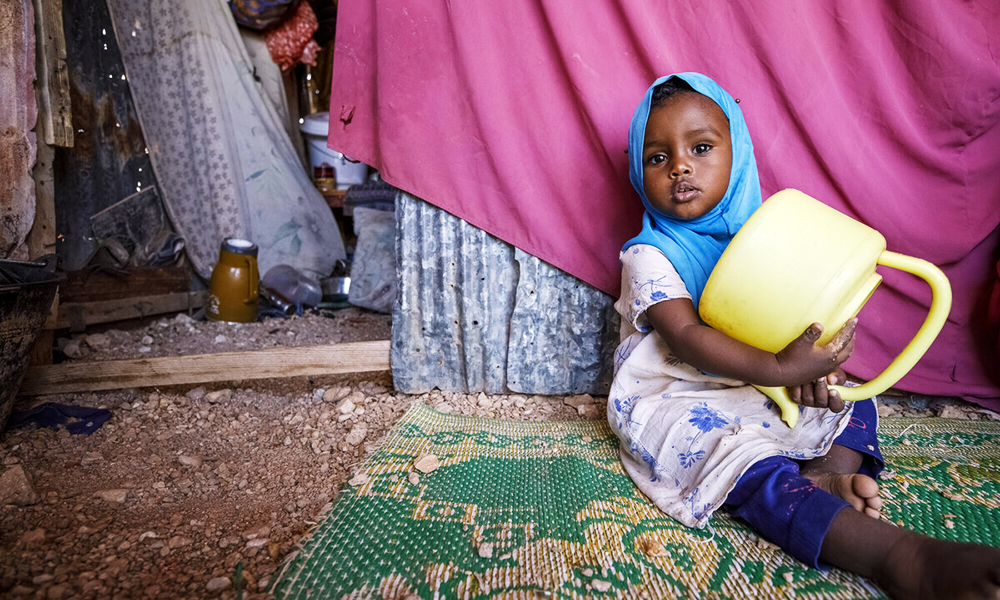The climate collapse is ramping up demands on the international aid sector just as cash from governments gets cut. Graham Martin asks what happens when you're needed more than ever but there's only so much you can do.
As a means of holding to account, how we name things matters.
We are somewhat inured to seeing pictures and reading news reports about devastation, mostly abroad, caused when the forces brutal of nature crack the thin skin of our civilisation.
Too often these are labelled as “natural” disasters, like some sort of divine visitation.
But there is nothing ‘natural’ about most of them. The natural world on a dynamic, never still planet will always have its cycles and cyclones, its ruptures and eruptions.
But how we deal with these and the state communities are left in to survive and adapt to such convulsions is up to us. Among the tragedies of unstoppable seismic events such as the 2004 tsunami is the fact that the poorest communities it hit suffered the most and took the longest to recover.
Actual natural events are part of the cycle of life, and we need better planning and fairer wealth distribution to be able to deal with them.
But what of those events that are of our making? They are sometimes called ‘natural’ disasters when they are anything but, being purely phenomena of human agency and economics.

To hold to account, we must call them what they are – unnatural, human-made, economic disasters and increasingly they are being driven by the climate collapse.
Take recent, and on-going, events in Pakistan, where devastating floods have seen whole villages being cut off, with rescuers struggling to reach them. At least 1,400 people have been killed and 12,700 injured.
People from Balochistan to Sindh have been left homeless and exposed to the elements and further rains are expected.
The UN Secretary General Antonio Guterres has been explicit in labelling it a “climate catastrophe”.
And there is the ongoing disaster in starvation-wracked east Africa, where one person dies of hunger every 48 seconds in drought-ravaged Ethiopia, Kenya and Somalia.
A recent report published by Oxfam, Save the Children and the Jameel Observatory castigated the world’s “failure to stave off preventable disaster”.
This, then, is the reality that the international aid sector faces. At a time when many governments – not least the UK’s –are cutting aid budgets, it is having to deal with repeated and worsening crises, driven by human-cause climate collapse.
Jamie Livingstone, head of Oxfam Scotland, told TFN that the climate crisis has already massively increased humanitarian need, with millions more people across the world impacted by disasters than in the past.
He said: “Climate scientists have long warned that climate change will result in increasingly extreme and frequent severe weather events, and this is playing out in real-time before our eyes, with devastating consequences.
“The money needed to help people affected by extreme weather-related emergencies like floods or drought is eight times higher than 20 years ago. But the humanitarian system just isn’t designed, nor funded, for this exponential rise in need, and for every $2 needed for UN weather-related appeals, donor countries are only providing $1.
“Furthermore, our latest report on global hunger shows that ten of the world’s worst climate hotspots – those with the highest number of UN appeals driven by extreme weather events – have suffered a 123% rise in acute hunger over just the past six years.”
This all poses a massive challenge for the international aid sector, says Livingstone: “While international NGOs are doing all they can to support those impacted, including those facing hunger across east Africa, the simple fact is that none of us, including UN agencies, will be able to adequately respond without eye-wateringly large increases in funding.”
He pointed out that humanitarian funding appeals for 2000-2002 were at least $1.6 billion but rose to an average $15.5bn in 2019-2021, an astonishing increase of 819%.
Yet, the reality is that UN appeals only cover about 474 million of the estimated 3.9 billion people in low and middle-income countries affected by extreme weather-related disasters since 2000, equivalent to one in eight people.
Livingstone added: “On top of humanitarian needs, the costs of climate-induced loss and damage to low and middle-income countries – the money needed to rebuild homes and hospitals or provide shelter and food after a cyclone – could reach between $290bn and $580bn a year by 2030. This does not even account for non-economic losses such as the loss of life, cultures and biodiversity.
“Faced with such devastating consequences, we must stop making matters worse. All rich, high-polluting countries must therefore act urgently to reduce their emissions. But that is no longer enough. They must also substantially increase the financial support they provide to the people, communities and countries already impacted by this crisis and that includes sourcing new finance, by making polluters pay, to address climate-induced losses and damages.”
This sense of alarm is felt across the international aid sector.
Ben Wilson, partner advocacy officer of SCIAF, says his charity expects its work to increase – and that answers must be sought at a global policy level.
He told TFN: “Every degree of global warming will bring more climate-related disasters. As well as an increase in frequency, there will be an increase in intensity, and therefore the impact.
“This view is backed up by overwhelming scientific consensus, collated by the UN-scientific advisory body on climate change – the Intergovernmental Panel on Climate Change in its 2021 and 2022 assessment reports.
“Key to the response to this – and debate that’s happening globally – will be the establishment of a financial mechanism for Loss & Damage under the United Nations Framework for Climate Change. This will be a key agenda item at the next international climate change conference, Cop27, in Egypt in November.

“The concept of Loss & Damage would see rich countries and private companies pay reparations, based on their contribution to the climate crisis. Funds are then distributed to countries to deal with the impacts of climate change, including extreme weather events.”
Wilson added: “In the meantime, without the establishment of this mechanism, organisations such as SCIAF expect to see a significant increase in appeals to us for emergency support. In some cases we will go out to our generous supporters, but there is only so much organisations like SCIAF can do. The long-term solutions need to be found at the global policy level.
“It is also critical to build in greater capacity at a regional, national and community level to reduce the risks of emergencies. The first responders are usually local – we need the humanitarian system to better recognise that. More broadly, development activities need to be designed to promote resilience and the reduction of climate change.”
This localised response is key, says Wilson, to build the capacity for response while waiting for solutions to come – or not come – from global policymakers.
He said: “Key to the response to extreme weather events is a localisation response, which SCIAF already takes. Working as part of the Caritas Internationalis network, the second largest humanitarian network in the world with member organisations in over 160 countries, we are able to help get support to people who need it much more quickly and effectively.
“A localisation approach means investing in the capacity of local organisations to quickly mobilise to respond to disasters, and establishing means of getting money to local organisations who are ready to act immediately when disasters strike.”
Oxfam Scotland’s Jamie Livingstone backs the Loss & Damage concept – and also sees debt cancellation as crucial.
Holding back the climate catastrophe is an urgent, but massive and possibly generational struggle, which must be committed to.
But if the international community decided, it could introduce Loss & Damage and cancel debts tomorrow.
He said: “Climate-fuelled hunger is a stark demonstration of global inequality. Countries that are least responsible for the climate crisis are suffering most from its impact and are also the least resourced to cope with it. Collectively responsible for just 0.13% of global carbon emissions, the 10 climate hotspots sit in the bottom third of countries least ready for climate change.”
“Therefore, rich, high polluting countries in the ‘global north’ must step in and do more. Oxfam is calling on governments to pledge funding to address climate-induced loss and damage, in addition to existing climate finance and aid commitments. We are pressing all governments to agree to establish and fund a new finance facility for loss and damage at Cop27, with annual contributions based on responsibility for causing climate change and capacity to pay.
“Rich polluting countries must also cancel debt to help low-income countries prepare for and cope with climatic shocks.”
Increasingly, the Disasters Emergency Committee (DEC) coalition of charities is being called into action – it raised £25 million in just two weeks for its Pakistan flood appeal.
The DEC-funded Sounding the Siren report on preparing the aid system for the climate emergency recommended seven ‘critical actions’, which include planning for scale, acting early and making sure resources on the ground are fit for purpose.
A spokesman said: “Global heating is leading to more frequent and intense extreme weather events, which will increase the number of weather-related disasters that international NGOs will need to respond to.
“Unfortunately the recent floods in Pakistan are a stark example of just how devastating these disasters can be, and the large-scale response that’s required.”







